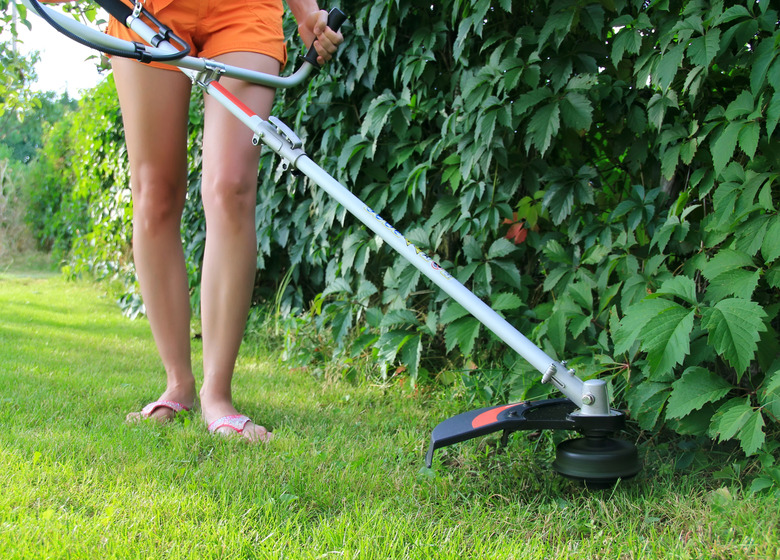What To Do When Trees Have Been Hit By A String Trimmer
You wouldn't think that a little piece of string could hurt a tree — but string trimmers don't actually use soft string. Instead, they slice through weeds and other materials with a flexible but sturdy piece of thin nylon — nylon that can easily slice through a tender sapling's trunk, or even the thick bark of an established tree. Such wounds can sometimes be treated, depending on the extent of the damage.
Assessing the Damage
Assessing the Damage
Trees that have trimmer damage usually show an obvious wound on the trunk, with missing bark and abrasions. If the damage is bad enough, the tree also might suffer from dieback of branches, yellowing or prematurely dropping leaves, and other problems such as insect pest infestations or diseases, which can happen when insects and fungi or bacteria enter the heartwood of the tree through the wound. If the wound only affects about one-quarter of the circumference of the tree, it will likely recover in time if it is otherwise healthy, according to the University of Maryland Extension's College of Agriculture and Natural Resources. If 50 percent or more of the circumference is damaged, the tree might die, and if the trunk is damaged all the way around, it will likely die.
Repairing the Wound
Repairing the Wound
There's not much you can do to help a tree heal from string trimmer damage. Wound dressings are not recommended because they are ineffective and can sometimes make the problem worse. Filling a cavity caused by the wound might help, but it rarely does, and it is an expensive solution. The best thing to do is trim any ragged ends of bark away from the wound so that the resultant open area around the wound is in the shape of a vertical oval. Use a sharp knife and remove as little of the bark as possible, being careful not to remove healthy bark from the wounded area. All bark surrounding the oval should be tight against the tree. The wounded area will develop a callus and eventually close.
Removing the Tree
Removing the Tree
It only takes two or three hits with a string trimmer to kill a young tree, according to Allen Wilson, a Master Gardener with the University of Idaho. And if damage is extensive, even an established tree might need to be removed, especially if it is dying on one side, leaning, or is in ill health due to a disease or insect pest infestation that might have entered the tree via the open wound. In these cases, and especially if the tree is threatening property or is a danger to people, the tree should be removed by a professional.
Preventing Future Damage
Preventing Future Damage
Prevent weeds from growing near the trunk of your tree in the first place by encircling it with a nice, 2- to 4-inch thick layer of mulch. The mulch will not only help prevent weed growth, but it will also help keep the soil moist and cool for the tree's benefit. The circle should be between 4 and 6 feet in diameter. Rake the mulch up to, but not touching, the trunk of the tree — leave a couple of inches of bare ground around the trunk. No weed growth means no need to bring out the string trimmer. If you do have some weeds sneak through the mulch or grow right up next to the trunk, remove them by hand rather than with a trimmer.
References
- Texas A&M University Cooperative Extension Agrilife Service: Line Trimmer Damage
- Texas A&M University Cooperative Extension Agrilife Service Ecosystem Science and Management Extension Unit: Tree Wounds
- University of Maryland Extension College of Agriculture and Natural Resources: How Do You Decide When to Remove a Tree?
- University of Idaho Extension: Beds Around Trees Protect From Mower and Trimmer Damage
- Texas A&M University Cooperative Extension Agrilife Service Ecosystem Science and Management Extension Unit: Mulching Your Trees
